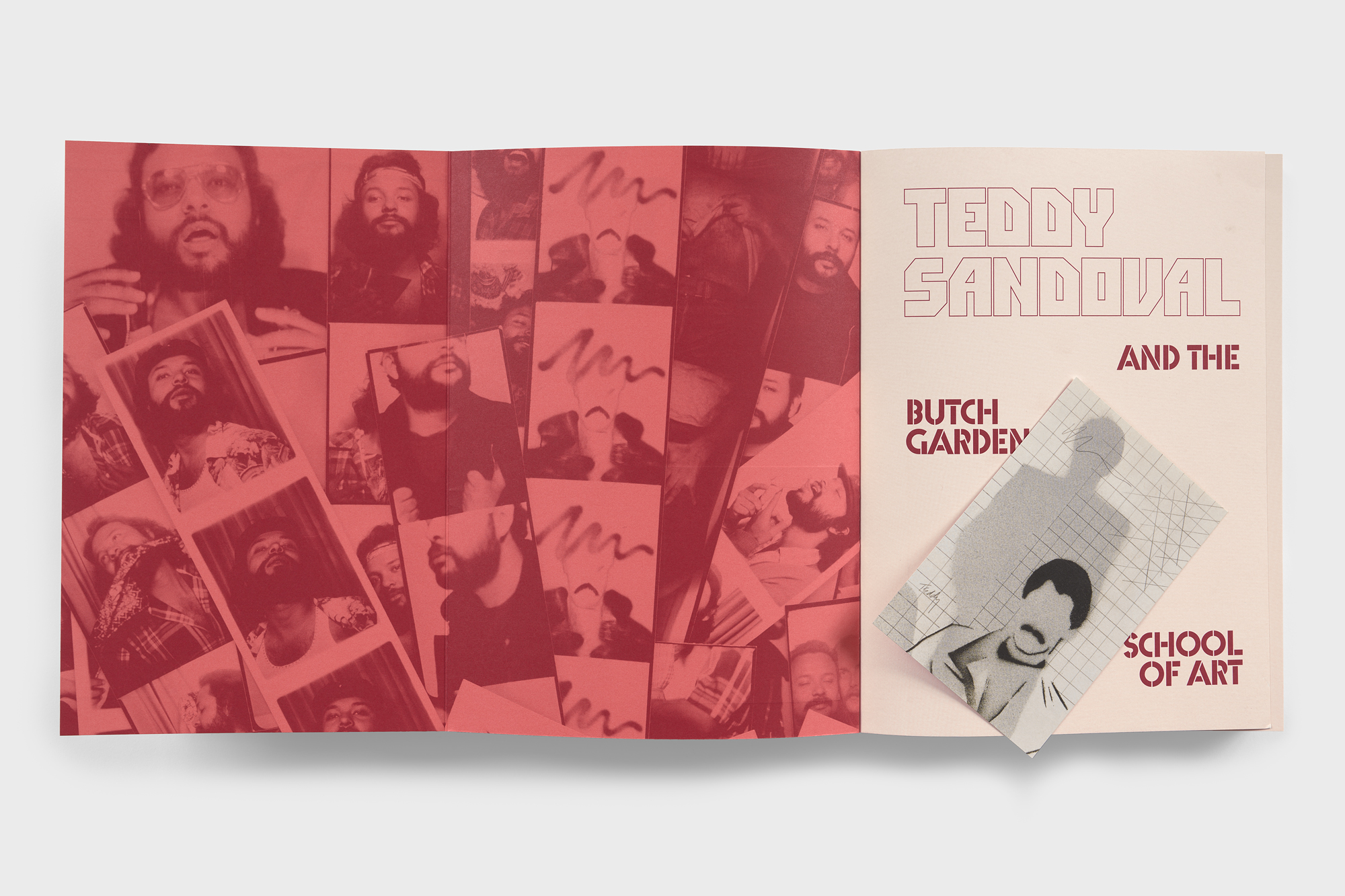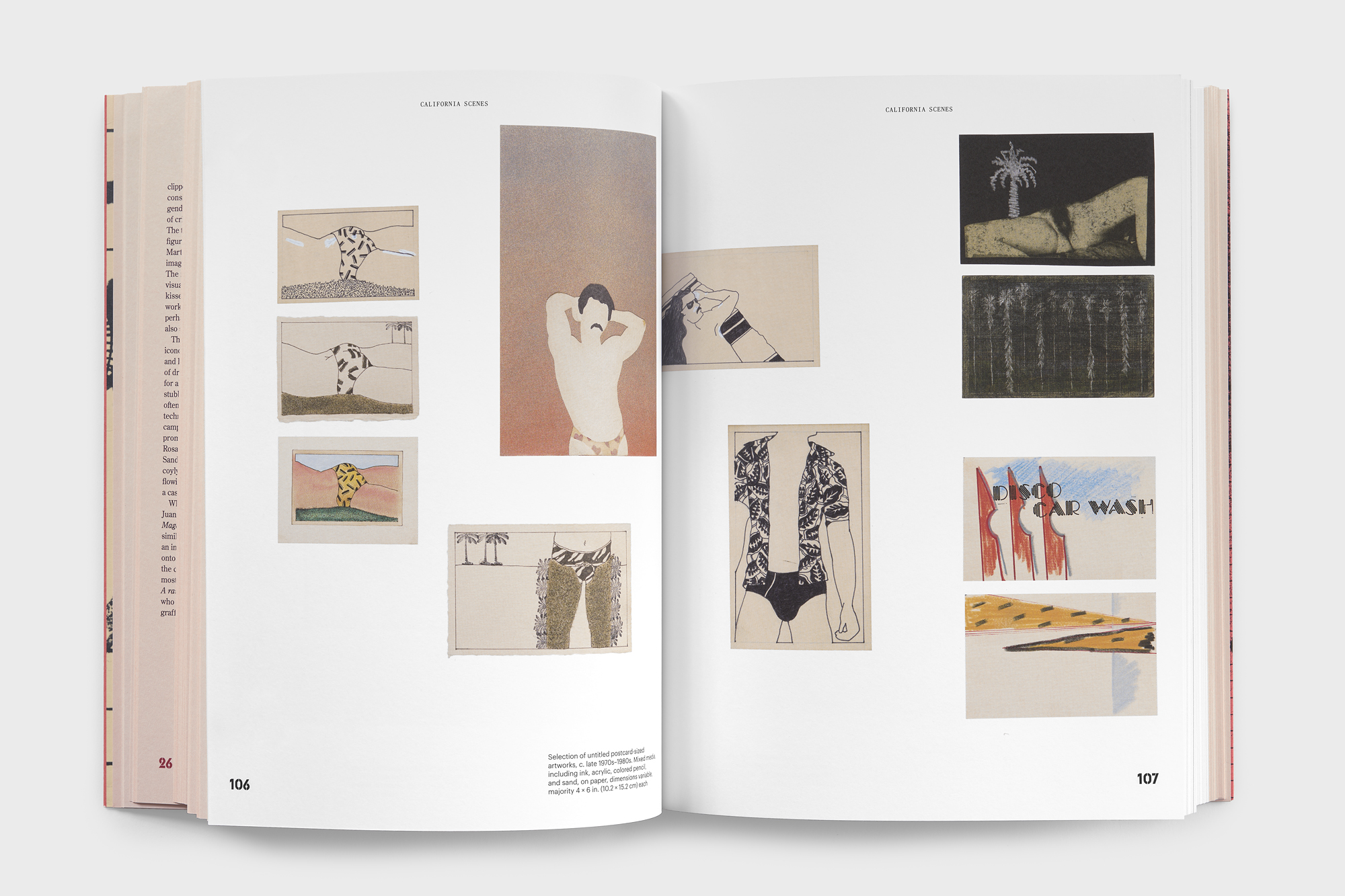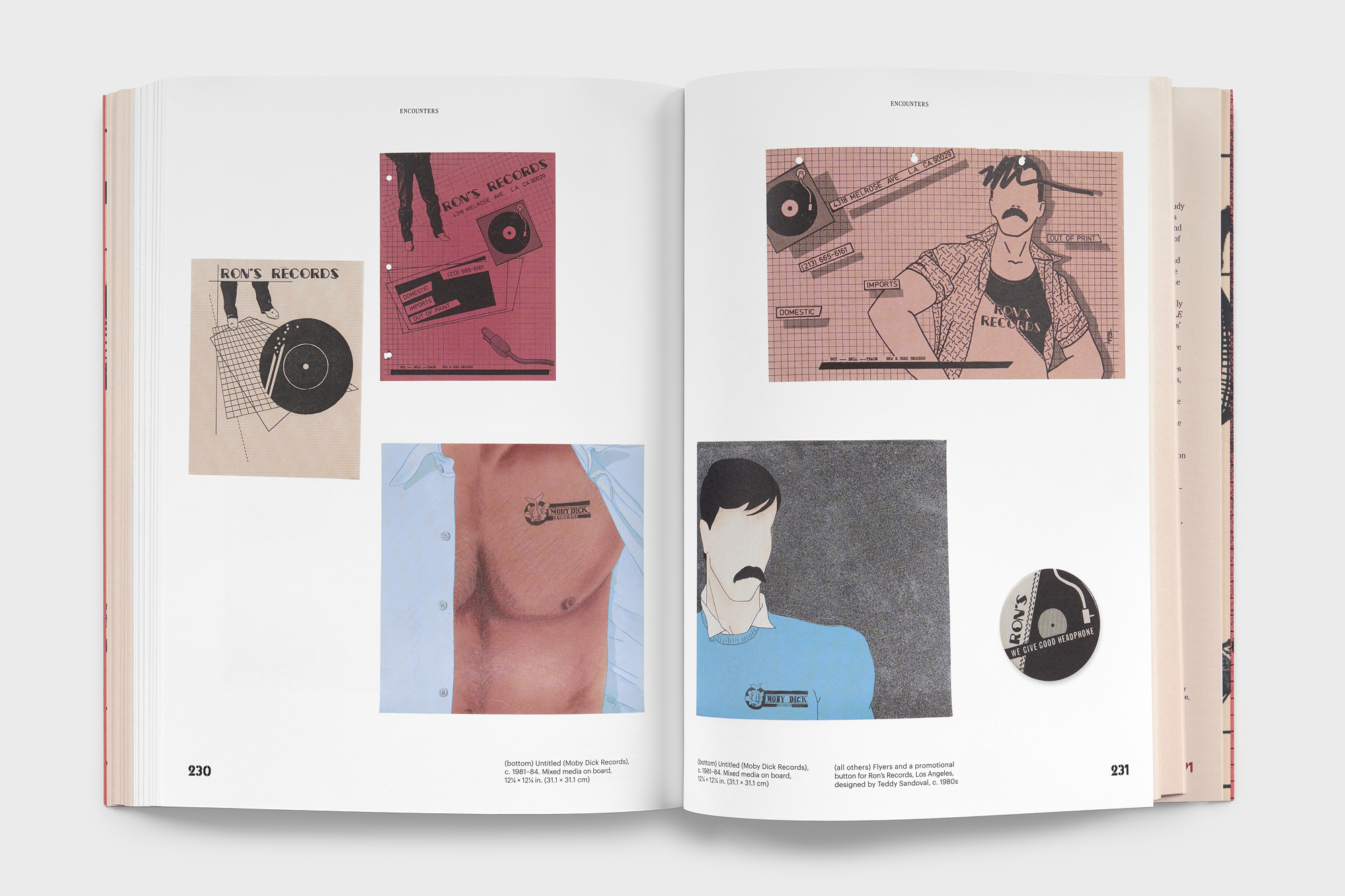
Press
The Brooklyn Rail: Art Books, 2025
Awards
Independent Publisher Book Awards: West-Pacific—Best Regional Non-Fiction, Gold, 2025
Independent Publisher Book Awards: Cover Design—Non-Fiction Oversize, Bronze, 2025
New England Museum Association Publication Awards: Exhibition Catalogues, Second Place (Over $500K), 2025
Teddy Sandoval and the Butch Gardens School of Art
Edited by C. Ondine Chavoya and David Evans Frantz
Contributions by Mari Rodríguez Binnie, C. Ondine Chavoya, David Evans Frantz, and Raquel Gutiérrez
Designed by Content Object: Kimberly Varella, Art Direction and Design; Gabrielle Pulgar, Production Designer
Softcover with flaps and eight postcards randomly inserted throughout, 304 pages
Publisher: Inventory Press, Independent Curators International (ICI), Vincent Price Museum, and Williams College Museum of Art, 2024
ISBN: 978-1-941753-59-0
Dimensions: 8.25 × 11 in.
Separations: Echelon Color, Los Angeles
Printing: Ofset Yapımevi, Istanbul, Turkey
Published to accompany the artist’s first retrospective exhibition, Teddy Sandoval and the Butch Gardens School of Art examines the work of the inventive yet overlooked Teddy Sandoval, a central figure in Los Angeles’s queer and Chicanx artistic circles. Sandoval was known for producing subversive and playful artworks in a range of media that explored the codes of gender and sexuality, particularly conceptions of masculinity. This book looks at the widely unknown practice of Teddy Sandoval alongside his generational peers.
Using typefaces that have both historical references to the multiple queer publications and activist flyers from LA and combining with contemporary monotypes made an anachronistic yet dynamic visual language of graphic styles. The overuse of display typefaces is a driving factor in the design and the relationships become clear in the reproductions of some of the bespoke magazines reproduced in the publication, as well as Sandoval’s own graphic design practice as shown in the identity and packaging materials Sandoval designed for Ron’s records (Los Angeles, c. 1981–84).
The use of spot colors to paint the backgrounds of the work of Sandoval's peers distinguish the multiple practices. This also introduced a wonderful rubric of juxtaposing some of the most comparative references between Sandoval's work and his peers on side-by-side spreads.
The irony of a definitive monograph made for an artists whose work partly flowed through the ephemeralities of queer sociality and mail art is maintained by the eight postcards inserted throughout the book.
















